This
post was originally published on
this siteOriginally posted at: http://www.nerdfitness.com/
I get multiple emails per day asking me advice on what workout plan they should follow:
“CrossFit sounds really tough, but people that do it LOVE it. Should I try?”
“Should I be doing P90X or Insanity? I’m supposed to confuse my muscles, right?”
“I want to look like this particular person, what’s the strategy I should be following?”
“Should I do 3 sets of 5? 5 sets of 5 reps? 4 sets of 4? Ah!”
These are all great questions.
It shows that people are taking matters into their own hands and trying to figure out the best strategy to get in shape. And that’s amazing!
After running Nerd Fitness for the past 9 years, I know how confusing it can be for people to try and navigate a hundred different workout options, each claiming to be the newest, greatest, or quickest.
Ask yourself enough questions and visit enough websites, you’ll freak yourself until you become Tweek from South Park:
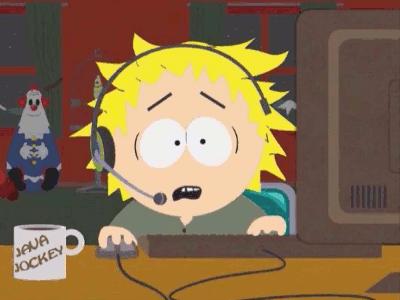
Poor Tweek.
I’ve seen people spend months and years trying to lose weight, jumping from one program to the next, and getting no results.
This makes me a sad panda.
I’ve ALSO seen people struggle for years only to turn their lives around permanently in a matter of months.
This makes me happy as a clam.
What separates the second group from the first?
The right mindset, the right community, and the right strategy for finding their PERFECT workout program.
This is the exact strategy we guide our 1-on-1 coaching clients through, it’s the mindset we teach in our online courses, and today I’m going to walk you through it, step by step (“day by dayyyyy”)!
Did you just start singing the theme song to “Step By Step?” You’re welcome.
Okay let’s get weird and help you find your perfect workout program.
Step #1: What Are Your Goals?
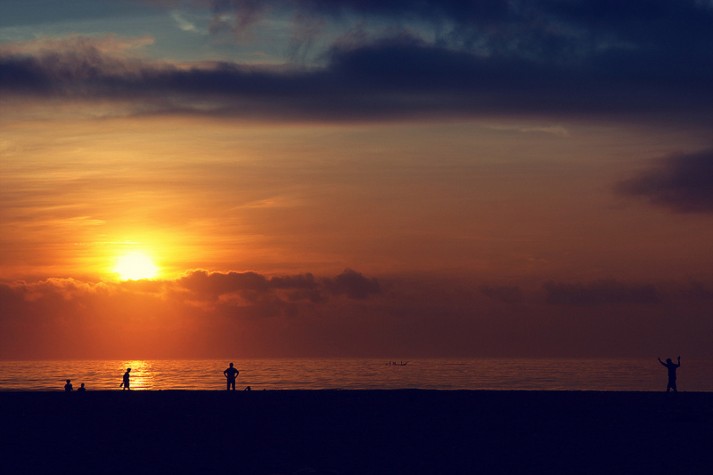
You’re reading Nerd Fitness, which means you likely have SOME goals.
Orrrrrrr, you just think my writing is so damn clever and funny that you’re willing to put up with all of this “better yourself” talk.
But it’s probably the goals.
And your goals will likely fall into one of three categories:
- Feel great and look good naked – You want to lose weight (and/or build muscle) and feel comfortable in your own skin.
- Get Healthy – Your doctor told you that you need to change your ways or you’ll die an early death. Yikes.
- Be Happy – You are on the hunt for an exercise program that you don’t hate.
I like to refer to these three goals as the Triforce of Awesome.
Because I’m a dork, and because you’ll remember it.
Happy, healthy, look good naked.
(There’s nothing wrong with wanting to look good naked, by the way. It’s why I started training all those years ago!)
MY goal for you is to have you satisfy all three conditions to become healthy, happy, and look damn good.
It starts by identifying why you’re here in the first place.
Because let’s be honest: this journey is gonna be tough.
You don’t just want to just “lose weight.” You want to “lose weight” so that you can “start dating again after a messy breakup.”
Or because “your dad passed away from health issues at a young age and you want to be around for many more decades to raise your children.”
The more specific and DEEP you can get with your reasoning, the more likely you’ll be to push through when you’re struggling to stay consistent!
I also want you to be realistic about how much time you think you can dedicate to this journey. 3 days a week for 30 minutes? 5 days for 15 minutes each day? Only on weekends?
That’s cool – just be up front with yourself.
Here’s how to put it all together:
PART A – IDENTIFY A GOAL THAT YOU’RE FOCUSED ON:
- I want to lose 100 pounds+.
- I want to pack on 30 pounds of muscle.
- I want to fit into my favorite dresses I haven’t been able to wear for years.
PART B – WRITE DOWN WHAT WILL HAPPEN WHEN YOU ACCOMPLISH THESE GOALS:
- What is your “Big Why?” “I’ll lose this weight and I can start dating again!”
- What would getting in shape mean to you? “A better life not full of pain.”
- Who are you doing this for? Your family? Yourself? Your wife?
PART C – BE REALISTIC WITH HOW OFTEN YOU CAN TRAIN:
- I’m a broke college kid with lots of time. I can train 4 days per week no problem for an hour. Great!
- I’m a single mom working two jobs, so I can train once per week at a gym and the rest will have to happen at home. Amazing!
- I’m a Robot with unlimited energy and I have come to conquer earth. Ruh roh. Email me.
Be specific with your answers above.
STEP #1 TAKEAWAY: Pick your goals, pick your “Big Why”
We’re going to pick goals that work for us, and then build on top of that foundation. Have you written down your goals yet?:
- “My goal is to lose/gain X amount of weight by X date.”
- “My Big Why is I want to start dating again/my wife to look at me like she used to/be an inspiration to my family.”
- “My plan is to train once per week and then find time elsewhere.”
Now that we have a foundation, we can start to build on top of that. Like Fornite. #UnecessaryButTopicalNerdReference
Step #2: Realize Exercise will contribute to 10% of the weight loss equation.
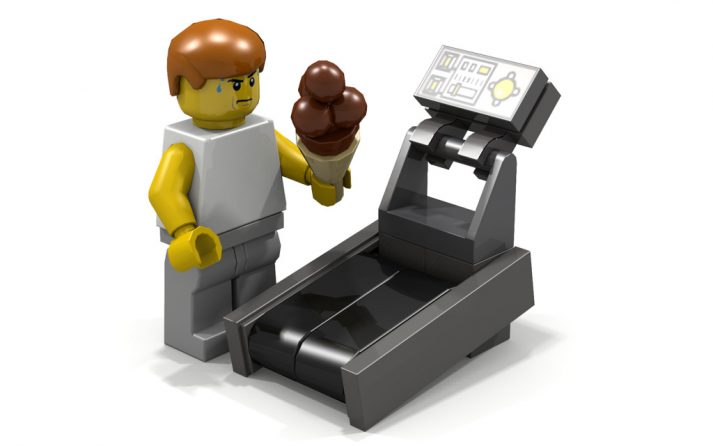
You can lose all the weight you need to lose without doing a single minute of “exercise.”
I shit you not.
(What a funny expression by the way, it makes me happy every time I use it.)
If your ONLY goal is weight loss in any way, then exercise is not a necessary component.
No treadmills. No gym memberships. No terrible bootcamps. No feeling bad about yourself training in public. No hating exercise.
“Steve, you sorcerer, what madness is this?” You exclaim!
When it comes to weight loss, how you eat will be responsible for 90+% of your success or failure.
That means if you are only looking to lose weight as your primary goal, you should be putting nearly ALL of your effort into fixing your nutrition.
As we say here in the Nerd Fitness Rebellion, “You can’t outrun your fork.”
I’ve covered nutrition EXTENSIVELY here on Nerd Fitness, so you’ll need to pick the strategies that work best for you:
I personally prescribe to a “pretty damn good, most of the time” strategy which keeps me in great shape, healthy, and happy.
So write this phrase down. Tattoo it on your forehead. Write it in the sky. Spray paint it on your garage door. Internalize this concept:
Nutrition is 90% of the equation.
Don’t believe me? Tim found Nerd Fitness, joined our NF Academy, and then due to an injury was told he couldn’t exercise.
So he did two things he could do: followed the plan laid out for him. He fixed his nutrition, adjusted his mindset, and built the habit of walking daily.
That’s it.
6 months and 50+ pounds of weight loss later, Tim is a changed man!
You can read his whole story by clicking on the image below:
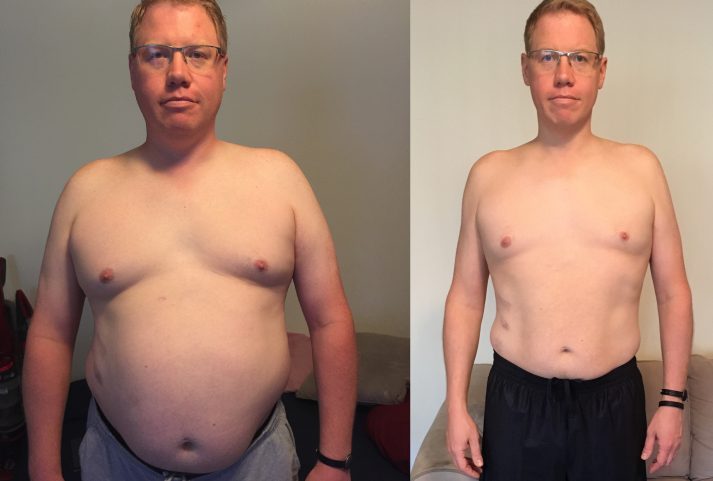
“But Steve, walking is exercise!”
Yes, I know, party pooper. It’s also a thing we humans do every day, and Tim was going on short walks.
So although Tim walked, it was his nutritional changes – and his mindset change – that did ALL of the “heavy lifting.”
Got it? Good.
So yes, exercise burns calories. But more importantly, it reminds us that we’re making healthier choices in our life. Which means it can also remind us to make better food choices.
Just please don’t do this: “Well I exercised today, so now I can eat 5000 calories!”
Instead your mindset needs to be “Well i exercised today, so I’m going to stick with my eating strategy so I don’t backslide!”
STEP #2 TAKEAWAY: Pick a food strategy you can stick with!
Pick a strategy that speaks your language. Nutrition is the most important thing, so your time is best spent understanding this stuff!
If you are trying to lose more weight or build more muscle FASTER, your nutrition needs to be even MORE dialed in.
Here’s how to make better choices in a nutshell:
- Start tracking how many calories you eat, education for the win!
- Eat fewer calories than you burn each day. Eating 500 fewer calories per day than normal = 1 lb. weight loss per week.
- Cut back on liquid calories, especially sugary beverages.
- Eat mostly real food. Meat, veggies, fruit, nuts.
- Track your progress and see how your body changes.
If you are a noob on nutrition, check out our free 10-level Nutritional System that simplifies the entire process! It’s free when you sign up in the box below:
Download our free weight loss guide
THE NERD FITNESS DIET: 10 Levels to Change Your Life
- Follow our 10-level nutrition system at your own pace
- What you need to know about weight loss and healthy eating
- 3 Simple rules we follow every day to stay on target
STEP #3: Do what you enjoy to Be Healthy and Happy.
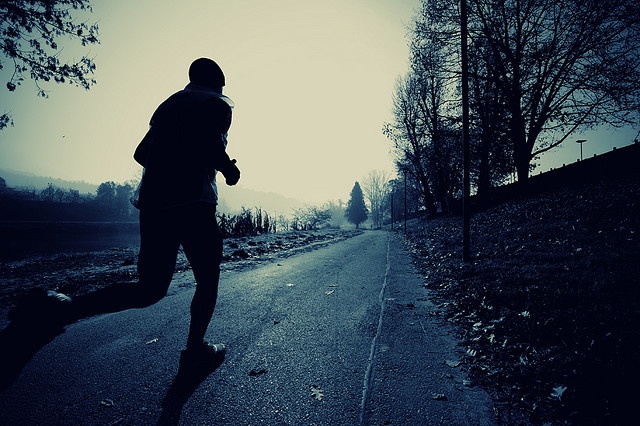
If your goal is to look good enough and feel good about yourself, there’s only ONE solution when it comes to the perfect workout program for you:
Any exercise you actually enjoy.
Full stop. Exercise is only a 10% piece of the formula, which means if your goal is “look pretty good, feel pretty good,” ANY exercise is a bonus.
And that means might as well ENJOY what you are spending your time on!
Here are some suggestions for the perfect base level of exercise:
Running, cycling, powerlifting, Yoga, parkour, gymnastics, weight training, running, cycling, LARPing, capoeira, jazzercise, swing dancing, Beat Saber, walking, hiking, geocache, Pokemon Go, hashing, ballet, powerlifting, CrossFit, bootcamps, martial arts, Brazilian Jiu-Jitsu, Ninja Warrior, Dance Dance Revolution, aerial silks, acro yoga, and anything else you can think of.
This is me giving you permission to attend jazzercise classes regularly, if you enjoy them. Seriously.
This is me also giving you permission to never run on a treadmill ever again, unless you actually enjoy running on a treadmill.
Don’t suffer through a particular type of exercise if you hate it. There are plenty of ways to get your heart racing and your body moving.
Exercise doesn’t need to mean misery: you deserve better!
Think of it this way: you never get to “be done.” You’re always a work in progress. So suffering unnecessarily to reach a goal just so you can stop won’t work.
Stop trying to get to the finish line as quickly as possible – that’s why you failed in the past. Instead…
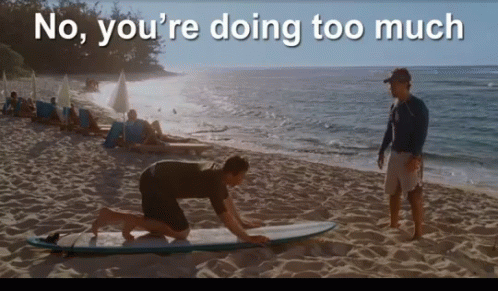
STEP #3 TAKEAWAY: Do an activity that you enjoy. Do it frequently.
Write down a list of “exercise” activities you love. Write down a list of “exercise” you hate. And then do things on the first list frequently, and don’t ever do things on the second list!
You don’t need to suffer.
Nutrition is 90% of the battle, so if you want to lose weight, get healthier, and be happier, pick a form of exercise that you actually enjoy.
To answer your next questions:
“But Steve I don’t like exercise.” You haven’t tried enough things! I too hate “exercise,” so I ONLY do things I enjoy.
“I have always wanted to try (activity) but I’m afraid to try it.” Use 20 Seconds of Courage – it works. I promise 
Step #4A: Build a Foundation of STrength.
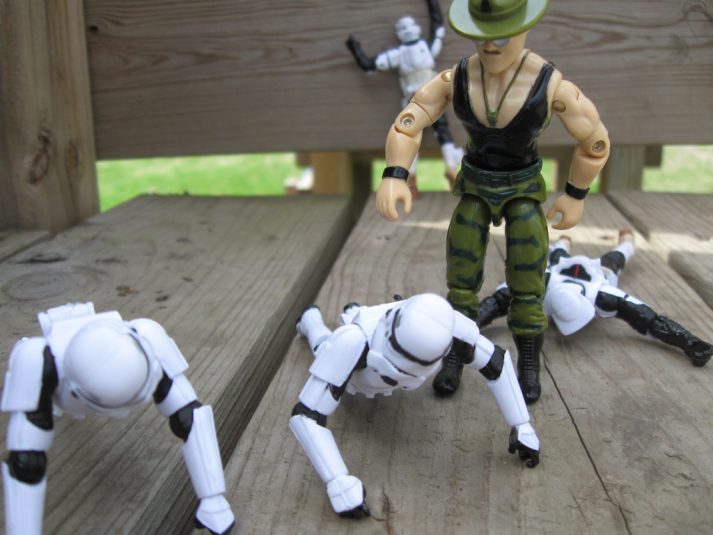
Okay, now we’re getting down to the good stuff.
Yup, eating better can help you lose weight.
Yup, any exercise is better than no exercise.
HOWEVER, if you want to keep yourself injury free, build a physique you’re proud of, AND get better at whatever fun activities you picked in Step #3, there’s a component that needs to be incorporated into your life:
Strength training.
100% of people, no matter their age or situation, should be doing SOME kind of strength training in some capacity.
Yes, both men and women should be strength training.
If you’re a woman, you will not get too bulky. I promise – I’ve been trying to get “too bulky” my entire life, and 15 years later I’m still not there!
Seriously though, strength training makes EVERYTHING better:
- When you strength train, your body is forced to burn extra calories to rebuild muscle. This ‘afterburner’ effect of increased calorie burning lasts for 24-48 hours, which means 30 minutes of strength training will burn significantly more calories than 30 minutes of steady cardio. Efficiency ftw.
- When you strength train, you teach your muscles to become more resilient and “antifragile.” From giving your kids a piggy back ride to playing frisbee to carrying groceries to walking up stairs, strength training makes you safer when doing everything.
- Strength training will make you better at any activity you picked in the above section for fun exercise. Yes, even THAT activity. Let’s just say your significant other wants you to strength train.
- Strength training builds the physique you want. It’s how you build muscle, aka, those things that most people want to have instead of being skin and bones.
So hopefully at this point you’re all:
“Steve you sly devil, I am INTRIGUED by strength training. But I don’t want to look like a bodybuilder, strength training seems not fun, and gyms intimidate me.”
I can satisfy each of those rebuttals with a single sentence:
When I say “strength training,” I simply mean “you are moving your body in a way that your muscles must respond by getting stronger.”
Your muscles are introduced to outside stimuli (you pick up your kid, you do push-ups, you carry groceries, you do a squat, etc.), and they get “broken down” through use.
Over the next few days, they rebuild themselves stronger to prepare for more stimulus (a greater challenge).
By building up your strength over time, it allows you to become more functionally strong and avoid situations like Mr Potato Head here:
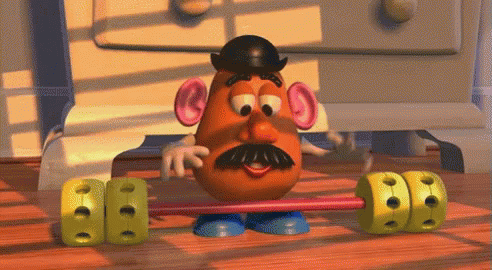
This means “Strength training” can take place in a gym or at your home, with your body weight or with free weights, in a box or with a fox. The ways to strength train are endless.
HATE gyms? You never have to go into one. Ever. Christina lost 50 lbs without a gym.
AFRAID of weight training? You can train with just your body weight!
WANT to learn how to weight train? Check out our Strength 101 series.
This does not need to be over complicated. Start with two basic movements that you can do literally right now. Maybe even in your cubicle:
I’ll wait. Boom, look at that – you just did strength training.
I promise you: get strong with push-ups, squats, and pull-ups, and you will be in better shape – and look better – than ever before.
It comes down to consistently training these movements and getting stronger.
How do you get stronger? Simple: “progressive overload.” This might sound like a complex term, but really it just means increasing the challenge by a tiny amount with each workout so your body has to work harder and adapt more each time.
And how you end up looking in the mirror and saying: “WHOA I HAVE MUSCLES WHEN DID THAT HAPPEN!?”
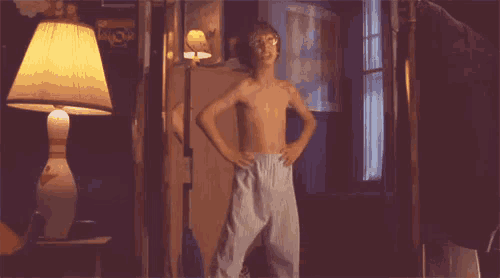
So every time you strength train, do ONE more repetition, one more push-up, or lift ONE pound heavier.
What’s the best way to do more than last time? Write down what you do! Keep it simple. Write down your sets, reps, and weights. And then do one better next time.
I have one final person I want to address: “You nincompoop, I hate strength training.”
That’s not a nice name to call me, but fair enough! Consider getting bit by a radioactive spider or finding a super-serum.
Otherwise, consider these alternative things:
- Aerial silks.
- Gymnastics and Parkour.
- Handstands build strength.
- Acro Yoga builds strength.
- Hiking with your kid on your back builds strength.
STEP #4A TAKEAWAY: Start strength training today.
You don’t HAVE to strength train, you GET to strength train.
Pick a workout that doesn’t intimidate you and give it a shot! You can start TODAY.
STEP #4B: How to Level UP Your Strength TraIning Routine.
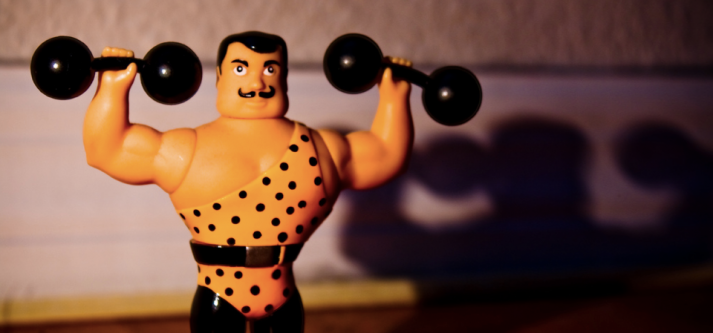
Alright alright, you read the previous section, and you’re thinking:
- “Steve I heard training individual body parts like a bodybuilder is the best for muscle building.”
- “What about Stronglifts 5×5 or Starting Strength or CrossFit?”
- “I hear I should ONLY do free weights, and machines are the devil!”
I have VERY opinionated thoughts about all of the above. These thoughts come from my particular situation that has been tested through trial and error.
In fact, I have done workout routines and trained in EACH of the ways above, and eventually settled into a routine that I love now. But each of them worked for me at the time I needed them.
My thoughts: I don’t care HOW you strength train when you get started:
If you want to follow a bodybuilder routine you found in a magazine which uses lots of machines and isolation exercises, great.
If you want to train your left bicep and right butt muscle on Tuesdays and right tricep and left shoulder on Wednesdays and so on, go for it.
If you want to follow a workout DVD or follow bootcamp style stuff on YouTube, great.
Whatever gets you manipulating your body and learning the fundamentals of strength training, I’m for it. As long as you’re enjoying it and getting results, keep doing what you’re doing.
If you’re interested in learning more, here are the foundational philosophies we teach in our Academy and with our coaching clients:
#1 You’ll be healthier, stronger, and get faster results training with free weights and bodyweight exercises compared to machines. However, machines can be used when you’re rehabbing an injury or there’s no other options (you’re at a hotel gym, for example). Here’s how to switch from machines to weights.
#2 Full compound movements like barbell squats, deadlifts, push-ups, pull-ups, dips, overhead presses, and rows are best for leveling up. Your body is a complex machine that uses all of your muscles in unison when you do physical activity. Thus, It’s safer and more efficient to train with compound movements instead of isolated movements.
#3 Keep it simple. If you make progress every week on compound movements by picking up more weight or doing more reps, your body WILL transform like Optimus Prime. But like, into a better version of you, not a robot:
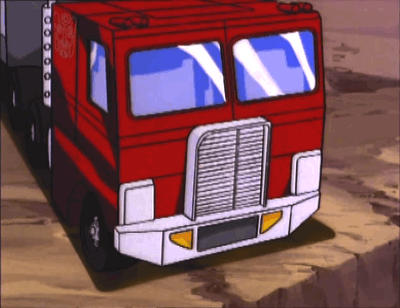
#4 Learning barbell squats and deadlifts can be the most powerful change you make in your life. Ask Staci.
#5 If you have more fun with a bodybuilder style workout, or you like bootcamp classes instead of weight training, that’s fine too. If you’re healthy and happy and getting results, stick with it.
#6 Muscle confusion is totally not a thing.
STEP #4B TAKEAWAY: Pick A Strength Training Program
Here’s how to level up your strength training program:
- Read our Strength 101 series, and learn to do squats, deadlifts, and presses.
- Afraid to train in a gym? Read this gym guide to build your confidence.
- Pick a program: the 7 Level Academy, Stronglifts 5×5, or Starting Strength 3×5
- Want form checks, guidance, and a custom workout each morning? Get a coach!
What’s that? You want to BUILD your own workout program? Great! Here’s how to do it, step-by-step (sorry, you might start singing the theme song again…)
If you want us to do the heavy lifting for you (HEYO), we have a free PDF for you to follow that teaches you and tells you exactly what to do.
You can get it free when you put your email address in the box below:
Download our comprehensive guide
- Everything you need to know about getting strong.
- Workout routines for bodyweight AND weight training.
- How to find the right gym and train properly in one.
STEP #5: Focus Your Training on Specific Goals.
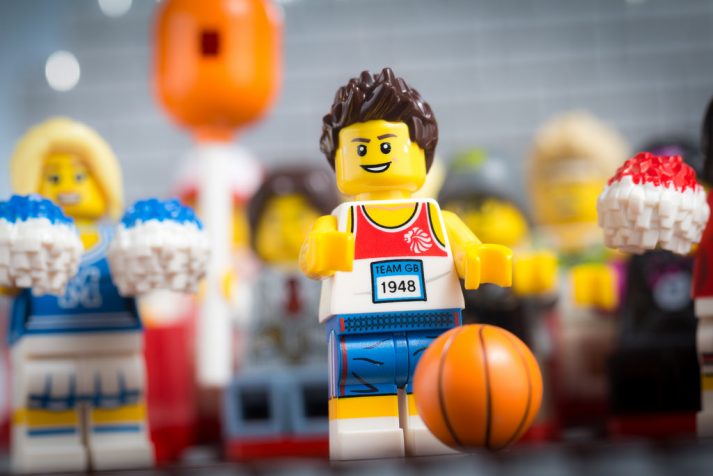
Okay, now we’re getting down to the secret sauce that has transformed thousands upon thousands of lives at Nerd Fitness.
Don’t worry our secret sauce is low calorie, low carb, and keto-friendly.
Here’s the scenario: you’re here with a goal of losing 100 pounds, and you start losing weight after eating better and moving more.
I’m so proud of you. In fact, I just called your mom to tell her what a swell person you are. Nice lady.
Anyways, things are going well until you start to approach your goal weight (woo!) and encounter a divergent path:
- Path A: “I’m about to reach my goal weight! I can be done soon!”
- Path B: “I’m approaching my goal weight. What is my new body capable of?”
People that pick Path A always backslide and put all of the weight back on over the next few months and years. They then have to start the “means to an end” cycle all over again.
Temporary action = temporary results.
Path B? It’s the reason our clients and customers keep the weight off and continue to transform.
Permanent progress + permanent challenges = permanent results.
Path B People ask themselves, “Now that I’ve lost this weight, what am I capable of? Let’s train for that!”
This is a distinct mental shift. Exercise is no longer a means to an end.
There is no end. Just like there is no spoon.
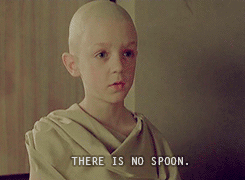
They’ve finished fixing up a car, and can’t help but think: “let’s take it to the track and see how fast it can go!”
We encourage our Rebels to shift from weight loss goals to physical challenges (Like Double Dare, but with less Gak):
- “I’ve always wanted to do a handstand, let’s start training to get better at those.”
- “I’ve always want to do train with gymnastic rings! Let’s try that!”
- “I’ve always wanted to run a half marathon, I will adjust my routine to become a stronger runner.”
- “I want to try Brazilian Jiu-Jitsu. I will sign up for a class!”
- “I’m gonna sign up for Swing Dancing so I can crush the dance floor at the next wedding I attend.”
WHY THIS WORKS: By training to get better at a particular activity, you are triggering the same processes in your brain that makes us hooked on progressing in video games:
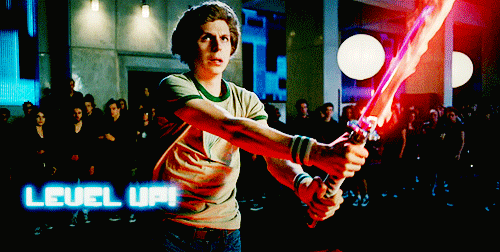
It’s why we say, “just one more level!” or “I bet I can do one more rep!” or “I can climb this new path that’s tougher than any path I’ve attempted before!”
STEP #5 TAKEAWAY: Shift from weight loss goals to physical challenges.
As you start to get in shape, updating your mindset can be a HUGE game-changer.
You spent all this work building a new body – take it out for a test drive and find out what you’re capable of!
Counterintuitively, the less you worry about your weight and the more you worry about your performance, the more likely you’ll be to build a body you’re proud of, that’s functional, and that you can keep, permanently.
As they say, “Appearance is a consequence of fitness.”
If you want to dig more into skills and advanced physique stuff, read our post here: “The ultimate guide to building any physique.”
Pick a skill, pick somebody farther along than you to model yourself after, and adjust your training and nutrition to get better at that skill.
When you get better and better at these physical skills, your physique will start to improve as a side effect.
STEP #6: Have Healthy Expectations.
As we’re talking about physique and physical goals, I want to address something that is a major challenge for many people:
“Steve, I want to lose some weight, build some muscle, and also build up more endurance. I want to get strong and run a marathon but also look like a model. Oh and get a six pack. But I don’t want to be too bulky. Can I do this in 6 weeks please?”
Here’s the truth: your body can only do so many things at once, and the three goals above will pull your body in three completely separate directions.
If you’re not sure what are realistic goals, I have answers for you on BOTH questions (click each to learn more):
- “How fast can I lose weight?” 1-2 pounds per week of weight loss is a safe pace. Could be more or less depending on your starting weight!
- “How fast can I build muscle naturally?” 1-2 pounds of muscle gain per month is possible under optimal conditions for most. This could be more or less depending on your level of experience.
- Generally your body can do one or the other. But it can’t lose lots of fat and gain lots of muscle at the same time. One requires you to eat LESS, and the other requires you to eat MORE. So pick one (weight loss, muscle gain). You can always change later.
Are those numbers in line with your expectations? Do you wish you could get in shape faster? Of course you do. So do I!
Surprisingly, by changing our timeline to be more realistic, we can make better progress than at any point in the past:
KEY TAKEAWAY #6: Have realistic expectations!
Have the right expectations, and put your focus on the process. You’ll get there when you get there – so just focus on what you can do today.
If you’re not sure if you should build muscle first or lose weight first, and your focus is on physique/aesthetics, my humble advice:
- Eat a caloric deficit for weight loss. Train heavy to maintain muscle mass.
- Do this until you get down to a low enough body fat percentage (10-11% for men, 17-18% for women).
- Increase your caloric intake. Build strength and muscle until you’re at your desired size.
- Decide now if you want to reintroduce cardio, cut more fat, or keep getting bigger
- Repeat!
Step #7: Build Momentum by Surrounding yourself with people who make you better.
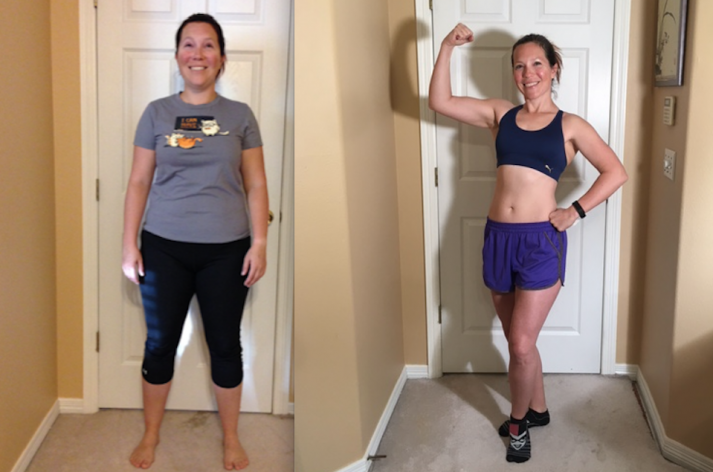
I love sharing stories on Nerd Fitness of REAL people, with real struggles, that found the perfect program that fit THEIR lifestyle, like Christina above.
These are not people with superior genetics, not on steroids, not choking down supplements.
They work full time jobs, have kids, friends, and nerdy hobbies. Some are single moms. But they found a workout program that works for their life situation.
Some of them are powerlifters.
Some of them train at home with no equipment.
Some of them run 5ks.
As you are starting to get yourself into better shape, who you associate with is almost as important as how you train.
Sounds ludicrous (did I just make you yell, “Luda!”), but it can be the difference between long term success and long term floundering. And not the cute kind.
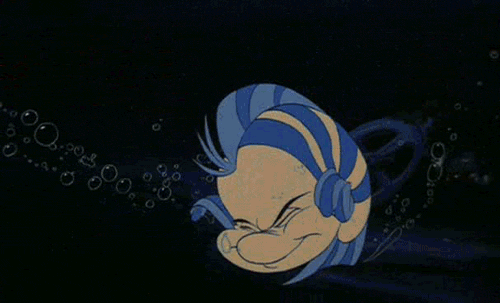
They say you are an average of the 5 people you associate most with. Think about your roommates, significant other, friends, and coworkers:
Are they people who have succeeded in the way you want to succeed, support you on your journey, can answer questions you might have, and make you want to continue being better?
Or are they people who ask you to skip your workouts, make fun of you for waking up early to train on a Saturday morning, and enable you rather than support you?
The more time you can spend with Group A people, the more likely you’ll be to stay on target and make progress.
As you are getting better at a skill, do whatever you can to hang out with people who are good at that skill!
- Like running and want to get better? Join or start a running club!
- Want to take powerlifting more seriously? Hire a lifting coach or join a powerlifting club.
- Want to be better at handstands? Try joining an adult gymnast class!
- Want to look like CrossFit athletes? Great! Join the cult! I kid, CFers, you’re good in my book

If you don’t have people in your life that are making you better, consider hiring a coach or instructor or joining a class to help you push yourself even farther and stay accountable!
And I’m not telling you to fire your friends, but you might need to make sacrifices like Katniss until you’re better equipped to stand up for your new healthy lifestyle when they want you to come back to the dark side!
Nerd Fitness helps people with workouts and eating better, sure. But I believe we get permanent results for people because we do our best to foster the most supportive community on the internet.
Many of our success stories have 1-on-1 instruction from our Online Coaching Program, while some come our self-paced NF Academy. And others? They read the free articles on Nerd Fitness and put helped themselves stay on target!
But it comes down to learning from and interacting people who are just like you, or who are people that you want to be like when you “grow up” (get in shape)!
You can click on each image to learn their full story:
STACI THE POWERLIFTER:
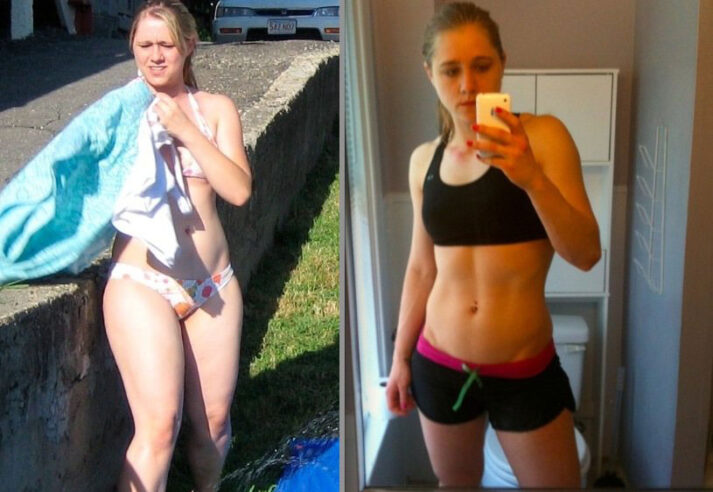
ANTHONY THE IT PROFESSIONAL:
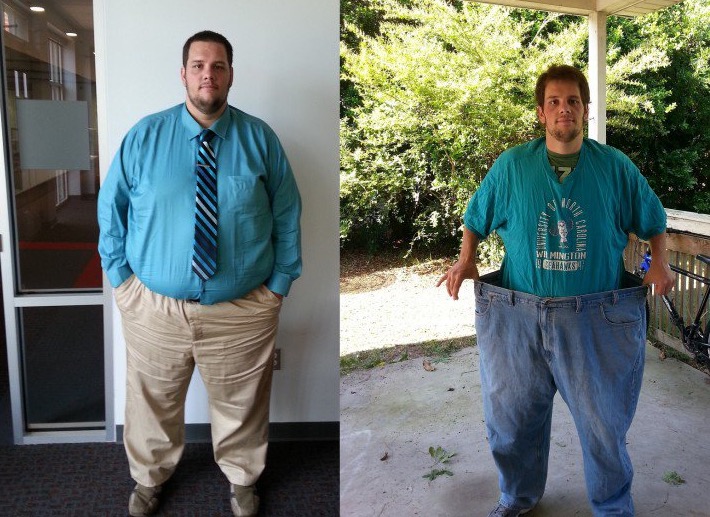
LESLIE THE SINGLE MOM:
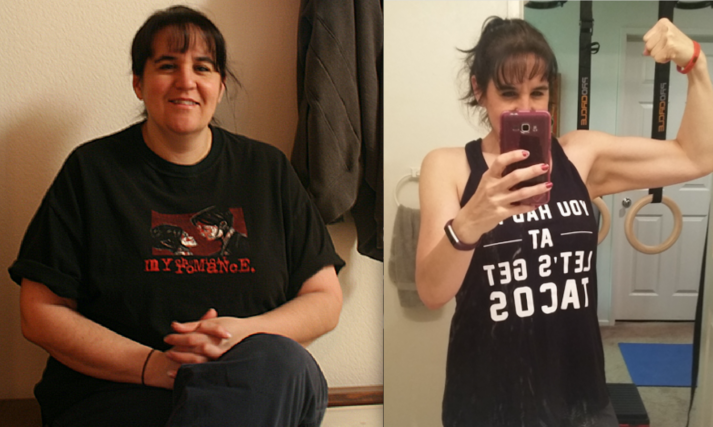 JOE THE IT DEVELOPER WHO TRAVELS 2 WEEKS PER MONTH:
JOE THE IT DEVELOPER WHO TRAVELS 2 WEEKS PER MONTH:
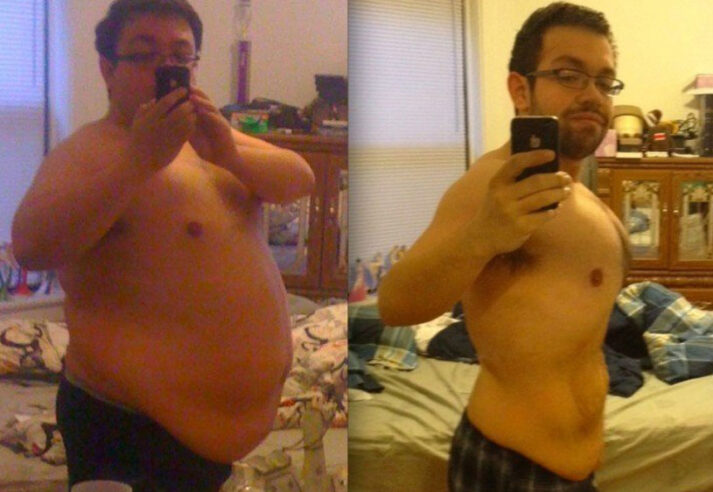 SAINT THE APP DEVELOPER WHO LOST 60 POUNDS AND GAINED 6 PACK ABS:
SAINT THE APP DEVELOPER WHO LOST 60 POUNDS AND GAINED 6 PACK ABS: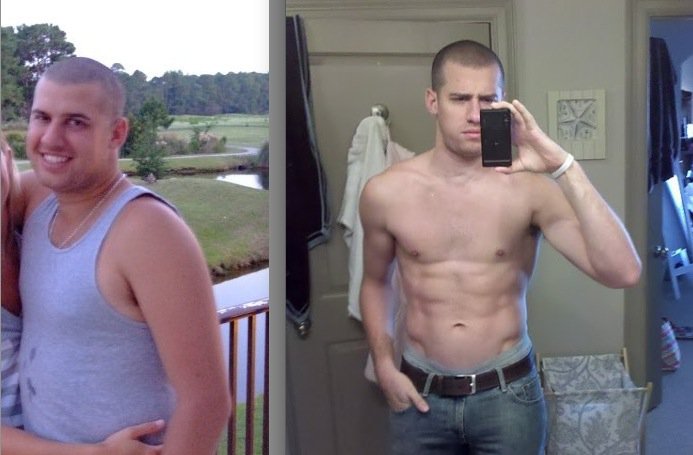
And me? I started with karate as a kid. Then cross country running in high school. Then ibodybuilder style training in college.Then it was bodyweight training.
And now? It’s powerlifting and gymnastics! It’s how I went from Steve Rogers to Captain America:
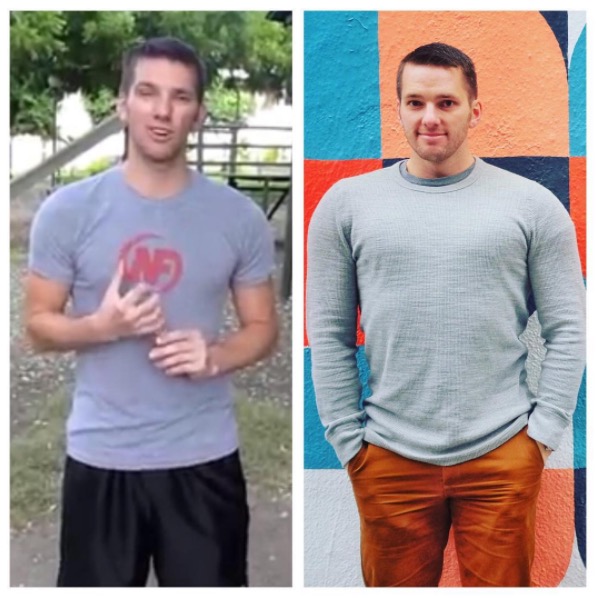
STEP #7 TAKEAWAY: Surround yourself with people that push you to be better.
You need people in your life that are pushing you to be better.
If you don’t have those people already, consider joining a club or class in your community. You might just make new lifelong friends!
And you want to be at the top of your game in a particular skill or activity, you might need a coach that knows your situation specifically.
We’d love to have you be part of OUR online community, but you need to determine what level of accountability you need and what your goals are!
In addition to our paid private communities, we ALSO have a free Message Board community that is thriving!
STEP 8: Track Your Results, adjust as necessary
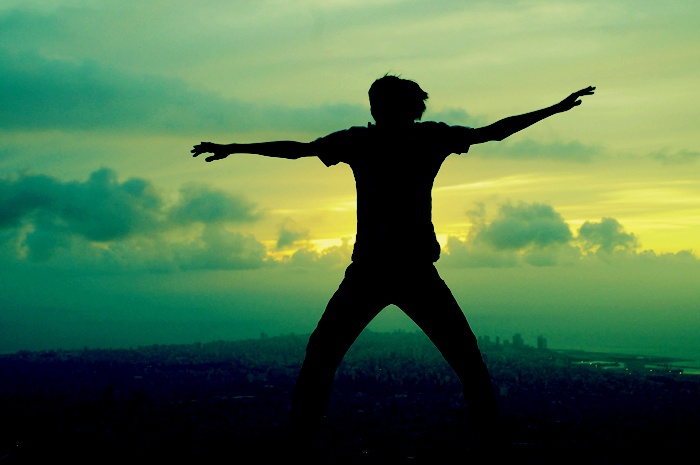
“Thanks Steve, but that was a lot. What do I do now?”
Let me Recap Steps #1-#7:
- Step #1: Pick your goals and your “Big Why.”
- Step #2: Realize that nutrition is 90% of the Equation!
- Step #3: Pick an activity you enjoy, do it frequently.
- Step #4a: Add strength training.
- Step #4b: Take strength training seriously.
- Step #5: Move from weight loss to physical challenges.
- Step #6: Have realistic expectations.
- Step #7: Surround yourself with people that make you better.
Depending on where you’re at in life, and how much weight you need to lose, You might be satisfied with just Steps 1, 2, and 3 for the next few years.
Thats awesome!
And if you’re ready to do more than that, we’re here for ya too.
If you’re looking for me to actually tell you what to do, I would suggest the following:
Here’s a strategy optimized for effortless awesomeness, happiness, and look-good nakedness:
- Strength train twice per week: squats, pushups, and pull-ups.
- Do fun activity 1-2x per week.
- Walk when you can.
- Focus on your nutrition.
I would start there, and then do two things after 30 days:
#1) Track your compliance to see if you actually did the workouts!
Did you go for walks, strength train twice per week, and do a fun activity? You can track this on your calendar or in a notebook.
- Yes? Great! Move on to question 2.
- No? Great! You learned you tried to do too much. Do less and repeat for another 30 days.
#2) Measure if you got closer to your goal weight/skills/physique?
Are you healthier, happier, and more confident?
- Yes? Great! Keep doing what you’re doing!
- No? Great! That strategy that didn’t work. Track your food intake, adjust your diet. Repeat.
“Steve that’s still not specific enough. I want you to tell me, for my exact situation, what to do every single day to reach my goals. Oh and hold me accountable. K thanks.”
I’m not clairvoyant or omniscient (…yet), so in the meantime, you can check out our really fun 1-on-1 Online Coaching Program.
Your Coach (a member of Team NF we’ll match you with based on your needs) will get to know you, your goals, and your challenges, and develop a workout plan that’s specific to not only your body type, but also to your schedule and life.
Click the image below to schedule a free call to see if we’re a good fit for each other!
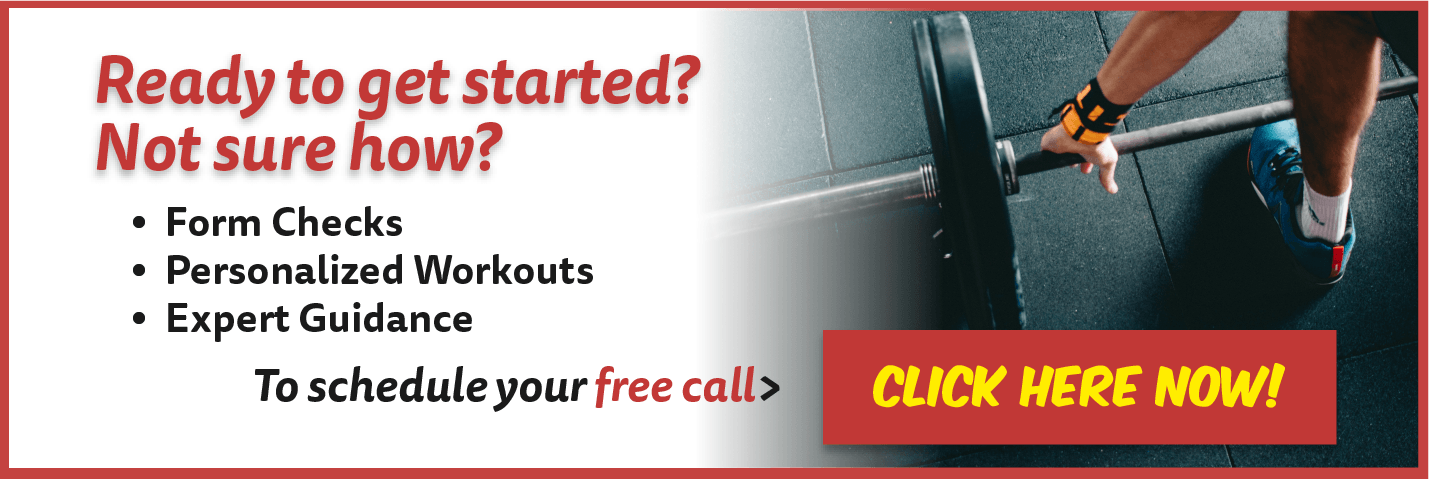
I don’t care whatever path you pick, be it our coaching, our Academy, or if you just read the free stuff on Nerd Fitness and never buy anything!
I just want to help you get results, feel better about yourself, and stop struggling to make exercise a consistent:
So let’s hear it. Where are you on your path to finding your perfect workout program!?
Tell me what your goals are. I’d love to hear about what you’re working on.
Which step are you on? Stuck on Level 3? What are the activities you LOVE/HATE?
What program are you following? Do you have a question on what to pick?
What have you found works for you, and what DIDN’T work for you?
Leave a comment and share your story with your fellow rebels!
-Steve
###
photo sources: Reiterlied Biking on the Lake, Reiterlied To The Lofoten Islands and Back Again 8/16 – Hooray for the blue sea!, clement127 Amazing playground: bicycles and football, clement127 Eurobasket 2015, Legozilla treadmill, themofoit: Stormtrooper Pushups, beach, road split, egg, runner





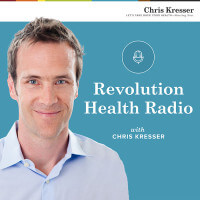






























 For now classes are 6pm and 640pm at 2840 Wildwood st in the Boise Cloggers studio.
Book your class NOW!
click this ==>
For now classes are 6pm and 640pm at 2840 Wildwood st in the Boise Cloggers studio.
Book your class NOW!
click this ==>








